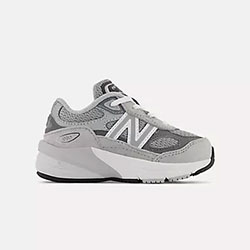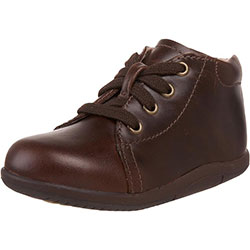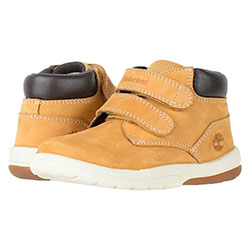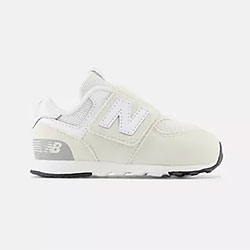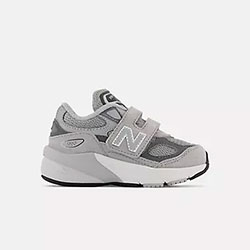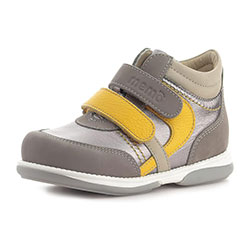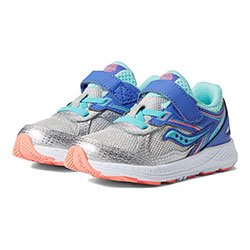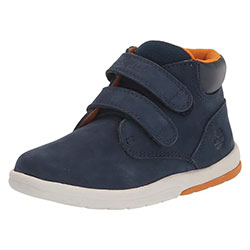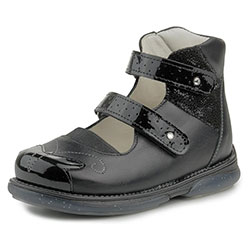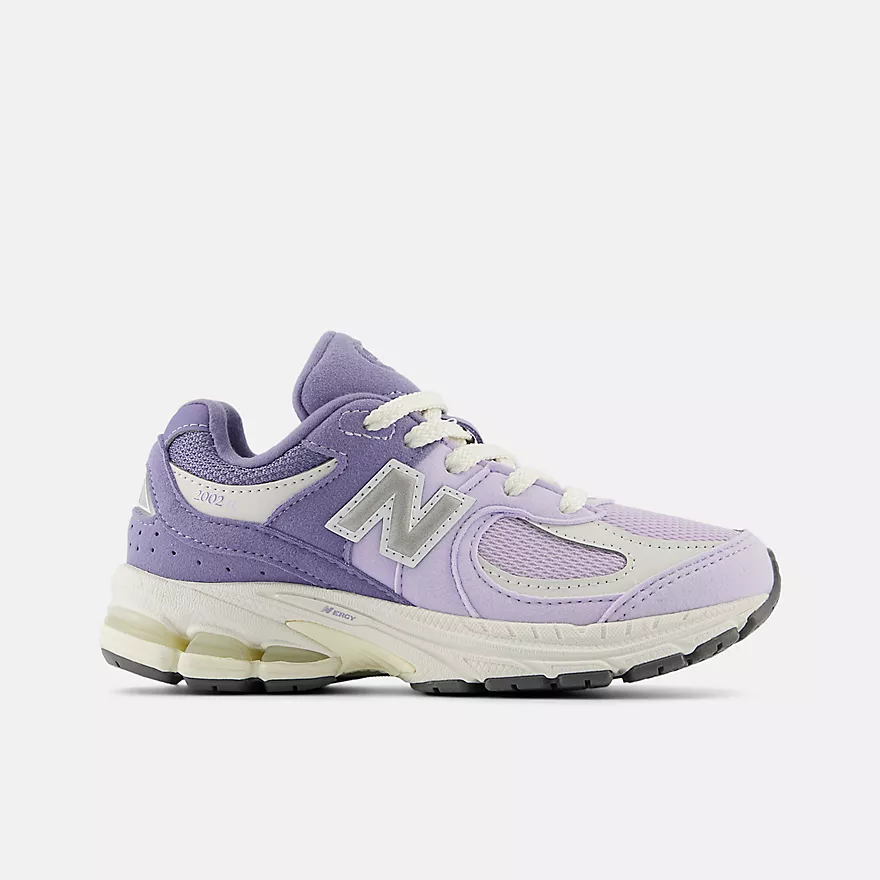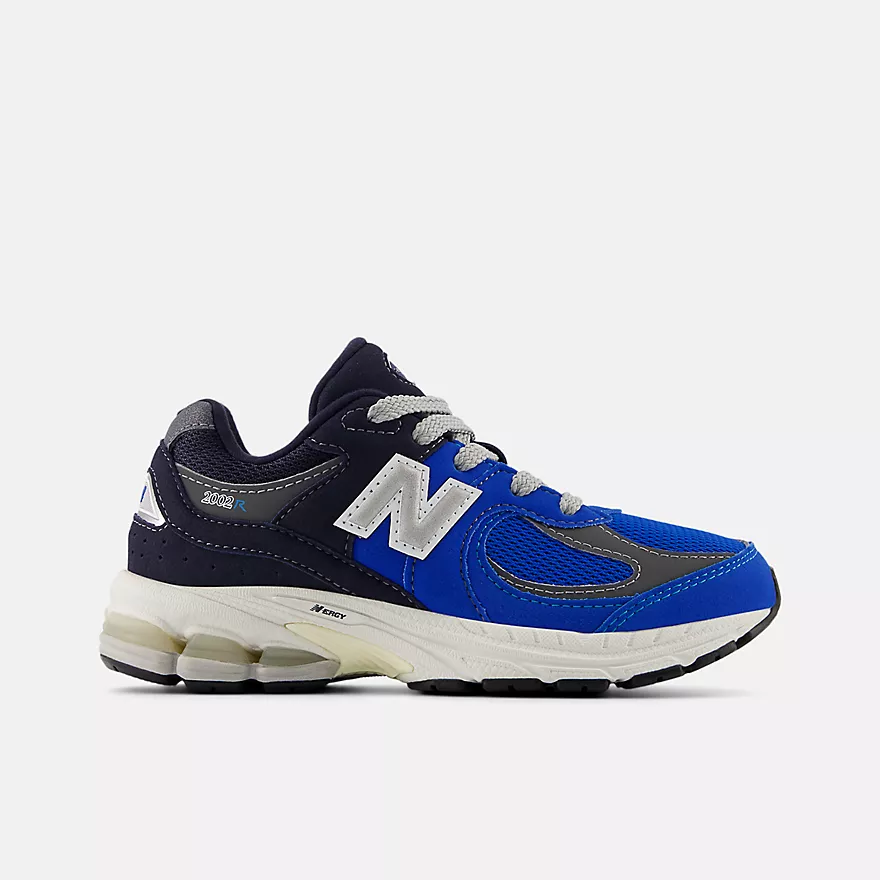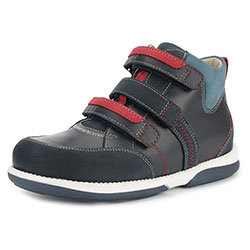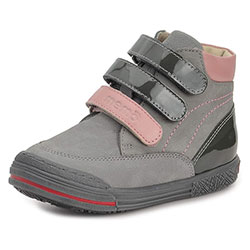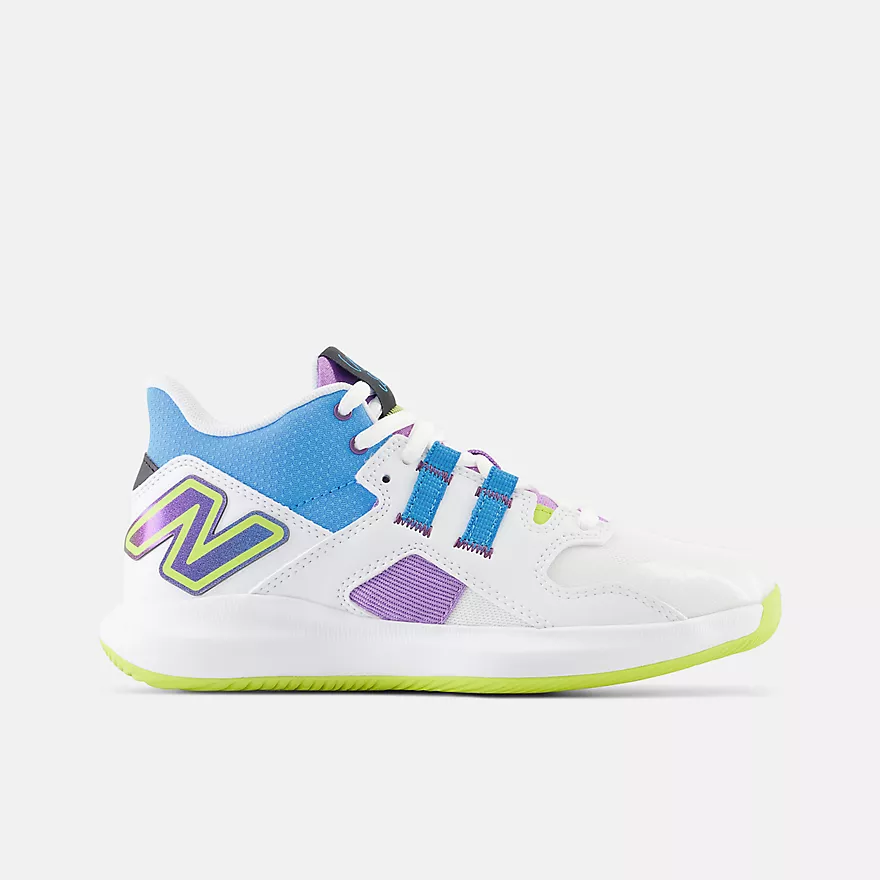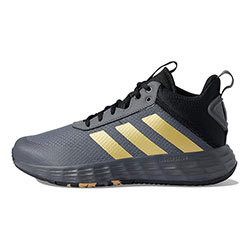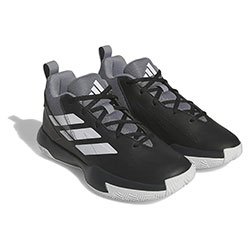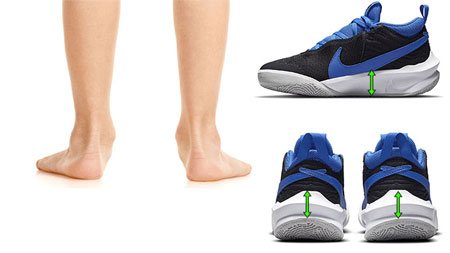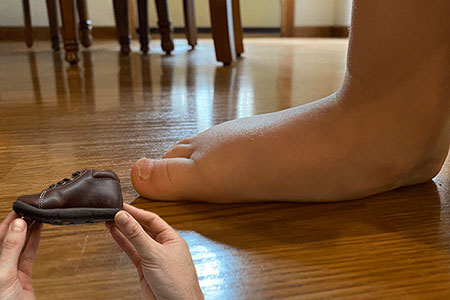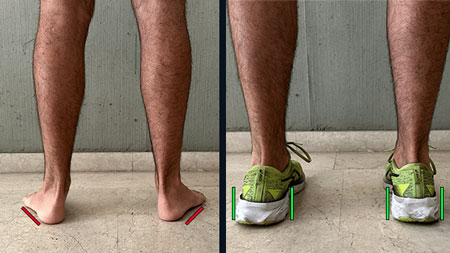Does Your Child Have Flexible or Rigid Flat Feet? – Proven Ways to Help Treat Flat Feet!

If your child has been diagnosed with flat feet there is no need to panic. However, it’s important for parents to be proactive and don’t leave this condition untreated as the earlier they intervene, the higher the chances the child won’t suffer from foot, leg, or lower back pain. Flat feet is also referred to as pes planus, pes valgus, or collapsed arches. The diagnosis and management of children with flat feet have long been a matter of controversy.
If you are in a rush, you can go directly to the selection of the best shoes for kids with flat feet.
Does Your Child Have Flexible or Rigid Flat Feet?
There are two types of flat feet: rigid and flexible. It is important to distinguish what type of feet your child has to know what approach to take. I am going to make things simple for you and try to explain to you the difference between these two in a simple way.
Flexible Flat Fleet
Flexible flat feet is the most common type of flat feet in children. The arch can be seen when the foot heel is elevated and no weight is applied to the foot. Take a look at the image below for better visualization purposes:

In a flexible flat foot, the arch disappears when a child stands on full foot. Watch what happens when the child is standing and putting pressure on the foot:

Most medical professionals tell parents that having a flexible flat foot is usually painless and does not interfere with their kids walking or participating in sports. They also state that if the flexible flatfoot does not cause pain or discomfort, no treatment is needed. I strongly disagree with this and let me explain to you why.
When children have a flexible flat foot, the arch collapses when standing. This means that the feet turn inwards, and once the feet are pronated, the knees and hips also become misaligned. This leads to the child developing poor posture habits.
My approach has always been fitting children in supportive shoes or orthotics, as this method is the least invasive one and the most effective as it allows children to use their muscles. This allows them to get stronger while in the proper alignment.
Something so simple such as providing a child with a flexible flat foot with the correct pair of shoes can help prevent the child’s feet from collapsing and allow the child to walk and run straighter. However, don’t take my word for it, let me prove it to you!
Kids with Flexible Flat Feet – What a Difference a Shoe Can Make!
Let’s take a look at a different child with a flexible flat foot standing barefoot. Do you notice how the feet are collapsing and turning inwards?
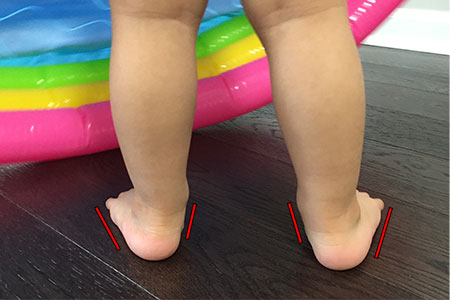
Now let’s take a look at the same child standing in a pair of supportive shoes I recommend. Do you notice how the child’s feet are a lot straighter? The shoes come with a substantial outsole and a firm heel counter that help prevent the child’s feet from collapsing and turning inwards.
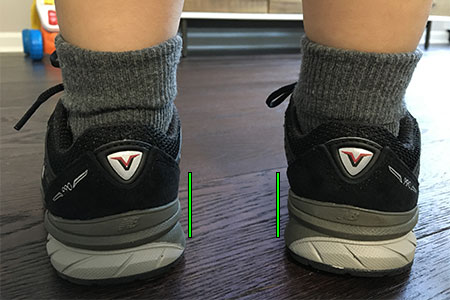
In some cases, the child might need orthotics but I always recommend starting with a pair of supportive shoes.
Rigid Flat Feet
When children have a rigid flat foot the arch is not present, whether bearing weight or not. Rigid flat feet is usually a result of abnormal formation of the joint and/or bones but can result from neglected flexible flat feet.
The arch cannot be seen when the foot heel is elevated and no weight is applied to the foot. Take a look at the image below for better visualization purposes:
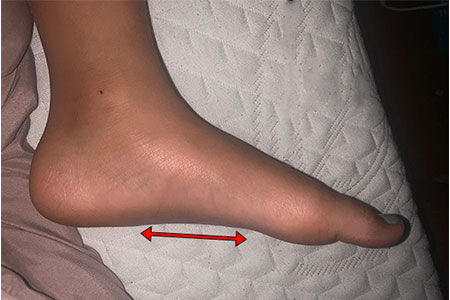
The arch also cannot be seen when the child stands on full foot:

If your child has been diagnosed with a rigid flat foot then I suggest taking action immediately as a rigid flat foot usually leads to foot and leg pain.
When children have rigid flat feet, it creates a chain reaction of misalignment up the rest of their bodies. This results in abnormal strain and pressure acting not only on their feet, but on their ankles, knees, hips and back. Rigid flat feet can lead your child to develop the following conditions:
- Bunions
- Heel Pain
- Knee Pain
- Hip Pain
- Shin splints
- Weight gain — as your child might refuse to participate in activities.
Below you can find an example of a child with rigid flat feet. Do you notice how the child’s feet are collapsing and the ankles are misaligned?
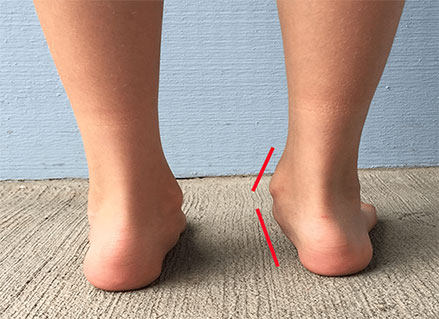
Let’s take a look at what happens when we fit that same child in a pair of shoes I recommend. The supportive shoes are preventing the child’s feet and ankles from collapsing and turning inwards. Please note that the shoes the child is wearing are not orthopedic shoes, just regular sneakers that simply provide better support than other shoes.
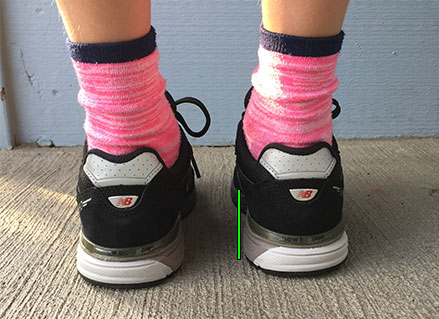
Most children with rigid flat feet have to wear orthotics inside of their shoes for extra support. However, let’s start by trying a pair of supportive shoes and depending on how your child reacts to the shoes we can consider an orthotic.
Something so simple as providing your child with the correct type of shoes can make a tremendous difference in your child’s walking gait and overall posture.
What Makes the Shoes I Recommend Effective for Flexible or Rigid Flat Feet?
They provide 3 key features:
1️⃣ Substantial Outsoles: This feature is going to help keep your child’s feet straight by preventing them from collapsing and turning inwards. Let me show you the difference in support between one of the shoes I recommend and a different style:
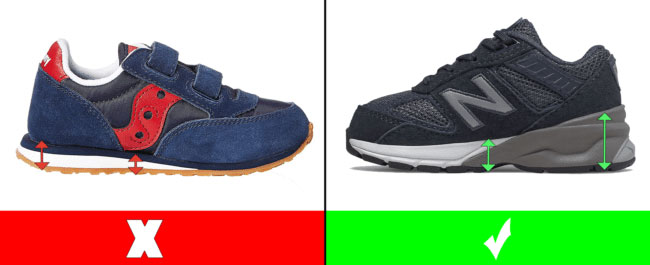
2️⃣ Straight Lasts: This feature prevents the forefoot from pushing out. You need to stay away from shoes that have an excessively curved last as they lack heel stability. Most Nike, Adidas, and Under Armour shoes come with a curved or semi-curved last. Take a look at the image below for better visualization purposes:

3️⃣ Firm Heel Counters: This feature provides ankle and heel support and it helps prevent your child’s ankles from collapsing and turning inwards. To truly treat flat feet, you need to start at the heel. The firm heel counter of the shoes moves your child’s feet into proper alignment and allows for natural development.
Below you can see the difference between a shoe with a firm heel counter and one with a softer one:

How Do I Know Which Shoes Work Better for Kids with Flat Feet?
I have been working for a specialized children’s shoe store for over 10 years. I help children with flat feet or other foot conditions daily. I truly believe that the correct type of shoes can be life-changing, and surgery or other invasive procedures should always be used as a last resort.
I am going to share with you a selection of the most effective shoes for children with flat feet. The shoes below work for children with flexible or rigid flat feet, just make sure that you choose the correct shoe width depending on your child’s foot shape.
All of the shoes that I recommend are available in medium (M), wide (W), and extra wide (XW). Disclosure: Some links in this post may be affiliate links and we may receive a small commission (at no extra cost to you) when you click our links and make purchases.
Best Shoes for Kids with Flat Feet
- The New Balance shoe style 990V6 is available for toddlers, little, and big kids
- Available in laces and velcro
- Fits children with medium, wide, or extra wide feet
- Suede/mesh upper provides durability and breathability
- Order this shoe half a size larger than your toddler’s current foot size
- The New Balance shoe style 990V6 is available for toddlers, little, and big kids
- Available in laces and velcro
- Fits children with medium, wide, or extra wide feet
- Synthetic/mesh upper provides durability and breathability
- Order this shoe half a size larger than your toddler’s current foot size
- The Stride Rite shoe style Elliot is available for toddlers
- Lace-up closure
- Fits toddlers with medium, wide, or extra wide feet
- 100% leather made
- Order this shoe half a size larger than your toddler’s current foot size
- The Stride Rite shoe style Emilia is available for toddlers
- Lace-up closure
- Fits toddlers with medium, wide, or extra wide feet
- 100% leather made
- Order this shoe a whole size larger than your toddler’s current foot size
- The Timberland shoe style Tracks is available for toddlers
- Double velcro straps
- Fits toddlers with medium or wide feet
- Water-friendly
- Order this shoe a whole size larger than your toddler’s current foot size
- The New Balance shoe style 574 is available for toddlers
- Available in velcro and laces
- Fits children with medium, wide, or extra wide feet
- Synthetic/mesh upper provides durability and breathability
- Order this shoe a whole size larger than your toddler’s current foot size
- The New Balance shoe style 990V6 is available for toddlers, little, and big kids
- Available in velcro and laces
- Fits children with medium, wide, or extra wide feet
- Synthetic/mesh upper provides durability and breathability
- Order this shoe a half size larger than your toddler’s current foot size
- The Memo shoe style Gabi is available for toddlers and little kids
- Double velcro straps
- Fits children with medium or wide feet
- Genuine leather and breathable mesh
- Thermoplastic asymmetric stiff heel counter for proper feet protection and stabilization
- Order this shoe half a size larger than your toddler’s current foot size
- The Memo shoe style Gabi is available for toddlers and little kids
- Double velcro straps
- Fits children with medium or wide feet
- Genuine leather and breathable mesh
- Thermoplastic asymmetric stiff heel counter for proper feet protection and stabilization
- Order this shoe half a size larger than your toddler’s current foot size
- The Saucony shoe style Cohesion is available for toddlers
- Velcro closure
- Fits toddlers with medium or wide feet
- Heel grid system for stable cushioning
- Compression molded EVA footbed for comfort
- Order this shoe a whole size larger than your toddler’s current foot size
- The Timberland shoe style Bootie fits toddlers and little kids
- Double velcro straps
- Fits children with medium or wide feet
- Padded collar for a comfortable fit around the ankle
- Water-friendly
- Order this shoe a whole size larger than your toddler’s current foot size
- The Memo shoe style Princessa fits toddlers and little kids
- Double velcro straps
- Fits children with medium or wide feet
- This is an ORTHOPEDIC shoe
- Rigid heel counter
- Order this shoe half a size larger than your toddler’s current foot size
- The Saucony shoe style Cohesion KDZ is available for little and big kids
- Velcro closure
- Fits children with medium and wide feet
- Heel grid system for stable cushioning
- Compression molded EVA footbed for comfort
- Order this shoe a half size larger than your child’s current foot size
- The Saucony shoe style Cohesion KDZ is available for little and big kids
- Velcro closure
- Fits children with medium and wide feet
- Synthetic and mesh upper
- Heel grid system for stable cushioning
- Order this shoe half a size larger than your child’s current foot size
- The New Balance shoe style Fresh Foam 650 is available for little and big kids
- Fits children with medium, wide, or extra wide feet
- Velcro closure
- ABZORB midsole absorbs impact through a combination of cushioning and compression resistance
- Mesh upper material features no-sew overlays for a sleek fit and feel
- Order this shoe half a size larger than your child’s current foot size
- The New Balance shoe style Fresh Foam Arishi v4 is available for little and big kids
- Fits children with medium, wide, or extra wide feet
- Velcro closure
- ABZORB midsole absorbs impact through a combination of cushioning and compression resistance
- Mesh upper material features no-sew overlays for a sleek fit and feel
- Order this shoe half a size larger than your child’s current foot size
- The New Balance shoe style 2002 is available for toddlers and little kids
- Available in laces
- Fits children with medium and wide feet
- Suede/mesh upper provides durability and breathability
- Order this shoe half a size larger than your toddler’s current foot size
- The New Balance shoe style 2002 is available for toddlers and little kids
- Available in laces
- Fits children with medium and wide feet
- Suede/mesh upper provides durability and breathability
- Order this shoe half a size larger than your toddler’s current foot size
- The New Balance shoe style Fresh Foam 650 is available for little and big kids
- Fits children with medium, wide, or extra wide feet
- Velcro closure
- Synthetic and engineered mesh upper
- Fresh Foam midsole cushioning is precision engineered to deliver an ultra-cushioned, lightweight ride
- Order this shoe a half size larger than your child’s current foot size
- The Memo shoe style Polo is available for little and big kids
- Triple velcro straps
- Fits children with medium or wide feet
- This is an orthopedic shoe
- Thermoplastic rigid heel counter
- Order this shoe a half size larger than your child’s current foot size
- The Memo shoe style Chicago is available for little and big kids
- Triple velcro straps
- Fits children with medium or wide feet
- This is an orthopedic shoe
- Thermoplastic rigid heel counter
- Order this shoe a half size larger than your child’s current foot size
- The New Balance shoe style Coco is available for little and big kids
- Lace-up closure
- Fits children with medium or wide feet
- NDurance rubber outsole technology provides superior durability in high-wear areas to help get more out of the shoes
- Order this shoe a half size larger than your child’s current foot size
- The Adidas shoe style Own the Game 2.0 is available for little and big kids
- Lace-up closure
- Fits children with medium or wide feet
- Supportive outsoles and firm heel counter
- Order this shoe a half size larger than your child’s current foot size
- The Adidas shoe style Cross Em Up Select is available for little kids
- Lace-up closure
- Fits children with medium or wide feet
- Non-marking outsole
- Order this shoe a whole larger than your child’s current foot size
- The Saucony shoe style Kinvara LTT is available for little and big kids
- Lace-up closure
- Fits children with medium or wide feet
- Cushioned footbed
- Order this shoe a whole size larger than your child’s current foot size
- The Saucony shoe style Shadow 6000 is available for little and big kids
- Lace-up closure
- Fits children with medium or wide feet
- Cushioned footbed
- Order this shoe half a size larger than your child’s current foot size
- The New Balance shoe style 574 is available for little and big kids
- Lace-up closure
- Fits children with medium or wide feet
- ENCAP midsole cushioning provides good arch and heel support
- Order this shoe half a size larger than your child’s current foot size
- The New Balance shoe style 327 is available for little and big kids
- Lace-up closure
- Fits children with medium or wide feet
- Suede and mesh upper
- Order this shoe a whole size larger than your child’s current foot size
- The New Balance shoe style Fresh Foam X 1080v13 is available for big kids
- Lace-up closure
- Fits children with medium or wide feet
- Suede and mesh upper
- Order this shoe half a size larger than your child’s current foot size
- The New Balance shoe style Fresh Foam X 1080v13 is available for big kids
- Lace-up closure
- Fits children with medium or wide feet
- Suede and mesh upper
- Order this shoe half a size larger than your child’s current foot size
Are Any Other Shoe Choices Available?
If your child happens to have narrow feet please contact me via email address and I will send you specific shoe recommendations:
How to Retrieve Your Child’s Exact Foot Length and Shape
For parents to buy the correct shoe size for their kids online they need to know what their children’s foot size is to begin with. If you are unsure of your child’s foot size and foot shape —narrow, medium, wide, extra wide you can find guidance on an article I created.
What Helps Kids with Flat Feet? – Find Out Now!
The 2 most effective treatments for kids with flat feet are supportive shoes and orthotics. Whether a child has to wear an orthotic inside of the shoes depends on the degree of the condition and whether the child is experiencing significant foot and leg pain.
Can You Fix Your Kids’ Flat Feet? – Let’s Straighten Up Some Rumors!
It’s important for parents to know that there are no exercises, special shoes, or shoe inserts that will mold your child’s arch. However, the correct type of shoes can significantly improve your child’s walking gait and overall posture.
Do Flat Feet Get Worse Over Time? – Yes, They Do!
If left untreated flat feet can worsen over time. Your child’s feet may gradually worsen to the point that many of the tendons and ligaments in the foot and ankle are simply overworking. If left untreated, flat feet can lead to the following conditions:
- Joint pain
- Muscle exhaustion/weakness
- Improper walking pattern
- Possible toe walking
- Poor foot development
I have seen many pediatricians who treat flat feet with a roll of the eyes. Parents should always follow and trust their instincts, and if you notice your child walking or running differently start by making sure that your child is wearing supportive shoes.
Does your child have a flexible or rigid flat foot? Let us know in the comment section below if shoes have helped improve your child’s walking gait or if you needed to try orthotics inside your kids’ shoes.

